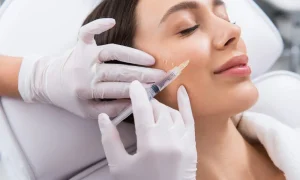These days, American society is facing a significant challenge of misuse of alcohol, drugs, and many other substances abuse. Its implication, particularly in the work environment, can be pretty alarming.
Those employees who regularly abuse substances can negatively impact the productivity and bottom line of the company. Data obtained from the National Safety Council has painted a very stark picture.
So, in this post, let us discuss briefly How drug tests help sobriety. The drug tests offered by DrugTestKitUSA are rapid and offer accuracy of up to 99% level, which is not only easy to use but also affordable.
The following are the five types of drug tests that can help you to maintain your sobriety. The following are the five types of drug tests that can help you to maintain your sobriety.
- Breath test
Law enforcement employs Breathalyzer tests to screen drivers for alcohol consumption. This non-invasive method analyzes exhaled breath for blood plasma alcohol concentration, making it convenient for roadside testing.
- Blood test
While blood testing is quite invasive when compared to breath or urine tests, it is the most effective for pinpointing specific alcohol concentration levels. Some blood tests offer precise intoxication levels up to 24 hours post-consumption.
To mitigate invasiveness, labs now offer less invasive blood collection methods. Microsamples, gathered from a fingertip drop or two, replace traditional venipuncture, enabling swift and minimally invasive collection even in remote areas.
These microsamples undergo analysis in labs through a dried blood spot (DBS) workflow. Compared to urine tests, results from blood tests, whether conducted in toxicology or clinical labs, offer greater detail.
Beyond drug presence, blood tests can unveil various health indicators. Thus, blood testing remains a valuable tool, offering comprehensive insights into an individual’s physiological state beyond mere substance detection.
- Urine test
Urine testing, commonly known as the “pee-in-a-cup” method, is non-invasive and widely used for detecting illicit drugs. However, it has limitations such as a short detection window of around 48 hours for regular drug use.
Additionally, urine samples are susceptible to tampering or substitution, diminishing their reliability. While they can contain high drug concentrations, urine tests may not provide comprehensive insights into long-term drug use patterns compared to other testing methods.
- Saliva test
Saliva testing is minimally invasive but effective only for detecting recent drug use. For instance, marijuana detection through saliva is accurate within 4-10 hours of consumption, making it suitable for short-term monitoring.
- Hair test
Drug metabolites enter the bloodstream in the scalp, where they are filtered by hair follicles, creating a permanent record of drug use. Consequently, individuals who used drugs like cocaine or marijuana months prior may still test positive for those substances due to lingering residues trapped in the hair.
In conclusion, drug testing plays a crucial role in promoting sobriety, particularly in the workplace where substance abuse can significantly impact productivity and safety. From non-invasive breath tests to comprehensive blood analysis and permanent hair testing, these methods offer varying detection windows and levels of detail.
By implementing regular drug testing protocols, companies can create a safer and more productive work environment while supporting employees in maintaining sobriety.






More Stories
Enhance Your Culinary Experience: Pairing Cannabis Strains with Local Flavors
How to Choose the Right Cheek Filler and Factors to Consider?
How can you use 11oysters candy to create a romantic moment?